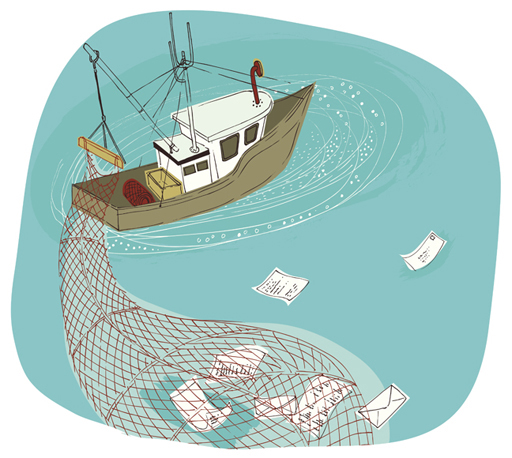2.3 Trapping phishing emails
Phishing is just one type of spam email which clutters our mailboxes and often delivers unsuitable or even illegal content to individuals.
Spam
Spam is yet another consequence of the early internet being developed by people who trusted one another. Just as we have had to protect computer networks against hackers – which you’ll cover in Week 6 – as more and more people have accessed the internet, email has become a tool that anyone can use for good or bad.
Most internet email is moved around the world using the Simple Mail Transfer Protocol (SMTP) which defines a standard template of commands and formatting that allow different mail programs, on a huge range of computers, to understand one another. Protocols are used to specify a set of special messages that should be exchanged between computers to achieve a particular functionality, in this case the delivery of email.
SMTP was defined when the internet had only a tiny number of users, so the original specification did not include any way for computers to authenticate one another, i.e. there was no way of knowing if the message claiming to come from TrustedBank actually came from TrustedBank’s computers. This weakness was addressed in a later extension to SMTP called SMTP-AUTH, but crucially it was not required, and so almost all mail servers still accept unauthenticated messages.
Spoofing
Spammers can attack a mail system by changing the information stored in email ‘envelopes’ which enclose the messages themselves. This is known as ‘spoofing’ and allows a spammer to disguise their actual address by writing new addresses for the sender (such as replacing their own address with that of TrustedBank) and the destination for receipts. Since SMTP servers do not perform any authentication, they simply pass on the email without checking that it was sent out by TrustedBank.
Simple spoofing is now being challenged by technologies that allow genuine senders to authenticate messages which can be checked by the recipient’s mail server, however only about half of all mailboxes have any protection against spoofing.
Provided a spammer has access to a fast network (or increasingly to a botnet), spam costs the sender almost nothing and although only a tiny fraction of users will respond to a spam message, sufficiently vast numbers of emails are sent that the rewards far outweigh the costs. It has been estimated that seven TRILLION spam messages, making up more than 85% of all email, were sent during 2011 alone. In 2018, spam was estimated to be down to 55% of all messages. Such is the torrent of spam that internet service providers and companies have to buy far more bandwidth and storage than they will ever need for legitimate purposes.

